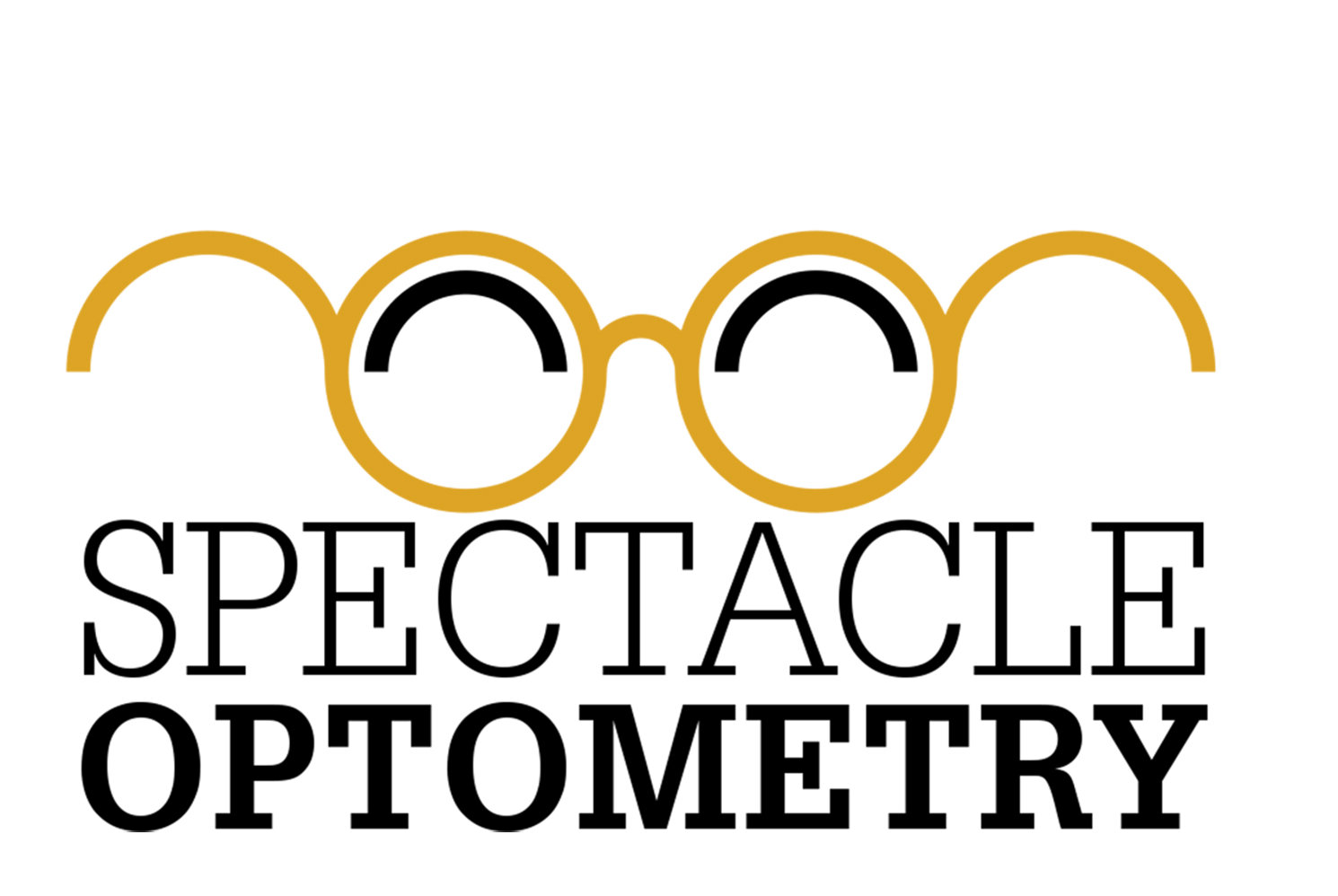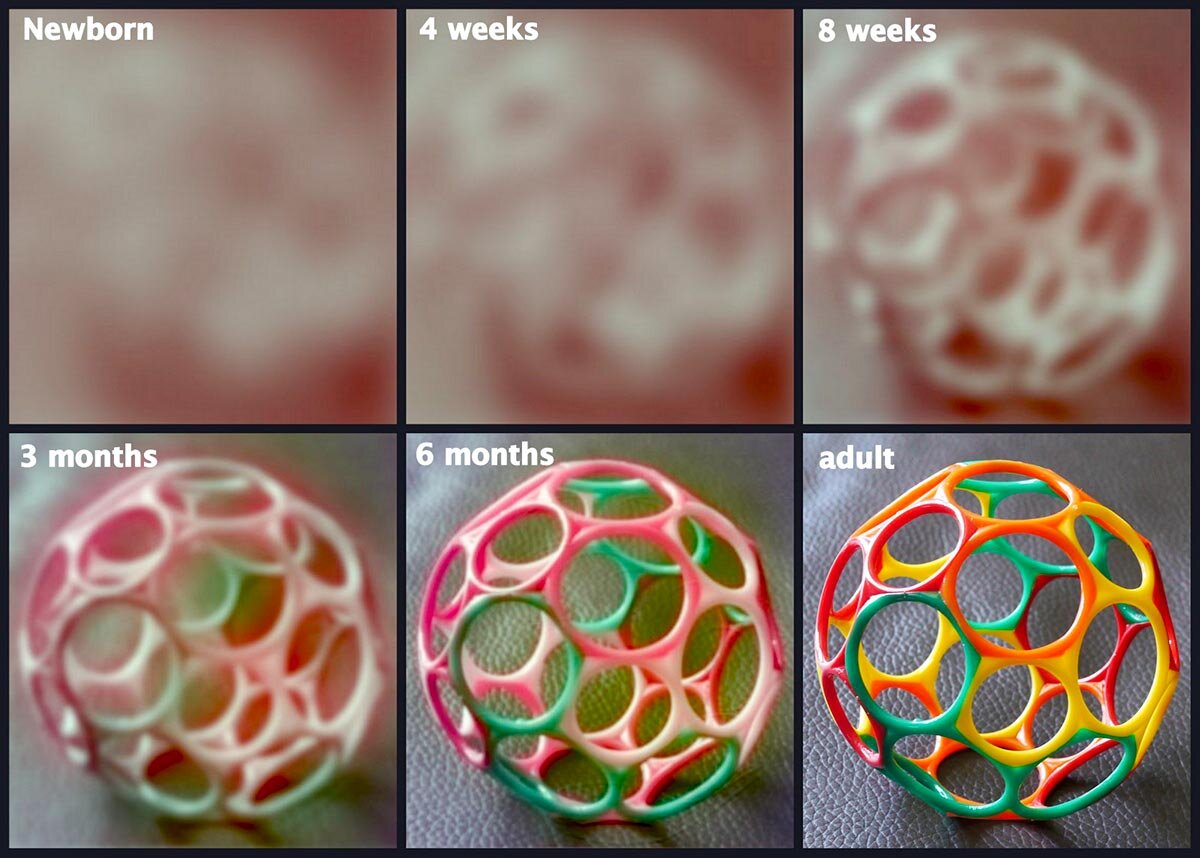WHAT CAN BABIES SEE?
Have you ever wondered what exactly do babies see? Can they see your face? Can they see the book you read them at night? What about the mobile above their crib? All excellent questions, but the answer dramatically differs based on how old they are! Let’s go through each vision milestone and take a look at just what baby can see along the way.
NEWBORN
As you might have guessed, your newborn can’t see 20/20 vision just yet. Actually it’s expected for them to be quite a bit farsighted when they are first born. Some babies will prefer to keep their eyes shut more often, while others will be more wide-eyed. Your newborn will be blinking in response to objects or bright lights and can stare at objects that are within 8-10 inches away, but won’t quite track them as they move. They tend to prefer faces to focus on, but who can blame them? Mommy is pretty great to lock eyes with! Their eye muscles are still getting the kinks out and getting stronger each day. They may seem a bit uncoordinated at first, but they’ll get the hang of things soon.
THREE MONTHS OLD
At two months old, you’ve probably noticed those tears are starting to roll! Before now, the tears were not being made. You might have heard squeals, but no water works. Your baby is also starting to get more focus to their vision and starting to differentiate facial features. They might even recognize and tell the difference between Mommy and Daddy! While they will still be pretty farsighted in vision, that is improving each and every day. Colors or hues around them are starting to be more obvious, rather than the black and white world of a newborn. They will be starting to track and follow objects more as their visual coordination improves as well.
SIX MONTHS OLD
Baby is half a year old! They are starting to reach for more things as their depth perception is improving quickly. They may also be favoring certain colors as their color vision is getting crisper by the day. Baby at six months is starting to see things at further distances. They can see objects out a window and might even be able to tell what an object is if they only see parts of it. Their vision is improving rapidly as they are getting further away from that extreme farsightedness they had as a newborn. Don’t forget that at six months babies should have their first ever eye exam too!
NINE MONTHS OLD
Babies eyes are probably their final color by now, so enjoy those baby blues! By nine months old, their depth perception will be fully developed as well. They’ll be starting to pull themselves up to stand because of this and learning to grasp items between their fingers as well. Crawling may be our new favorite thing, which is actually great to improve that eye-hand-foot-body coordination. We should encourage crawling, rather than skipping on to walking, as it will help to further develop eye-hand-coordination.
ONE YEAR OLD
Happy Birthday, Baby! There’s a lot to celebrate today as they are just about able to see what you can. They can identify themselves in a mirror and often will smile back! They’re pros at exploring their environment and looking or listening to just about everything. Recognizing familiar objects or pictures in books that you’ve read to them over and over should be a usual event. We’re starting to scribble and improve those motor skills, which is only furthering our eye-hand coordination and development. We’re already starting to pave the way for reading and learning as we visualize surroundings and stories in books. Be sure that we limit screen time to just video chatting to stay in touch with family members at this time. It’s best to avoid screens before 18 months of life to continue to naturally promote visual processing development.
Babies grow and develop so incredibly fast that it’s hard to know just what they might be doing, seeing, or saying at each milestone. We hope this helped you to have a little insight into babies sparkling eyes. And remember to bring your baby in to see their eye doctor at six months to ensure those peepers are right on track!






